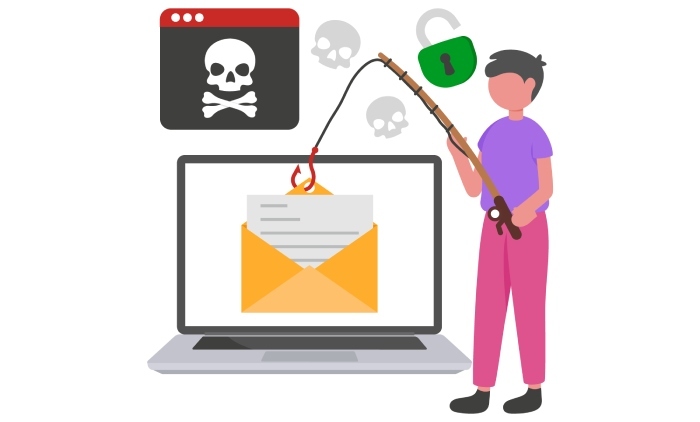10 Ways Modern SPF Software Prevents Brand Spoofing And Phishing
In today’s digital landscape, the rise of brand spoofing and phishing attacks poses significant risks to businesses and consumers alike. Modern SPF software plays a pivotal role in mitigating these threats by enhancing email security protocols and enabling real-time detection of malicious activities. This article explores ten key ways that advanced SPF tools, often delivered through sophisticated web-based platforms leveraging cloud computing, help prevent brand spoofing and phishing. We begin by establishing a foundational understanding of SPF and its critical function within email security infrastructure.
Understanding SPF and Its Role in Email Security
Sender Policy Framework (SPF) is a vital email authentication protocol designed to specify which mail servers are permitted to send emails on behalf of a domain. This mechanism helps prevent unauthorized sources from forging emails that appear to originate from trusted domains—a common tactic employed in phishing campaigns and brand spoofing.
Advanced SPF software operates as a diagnostic tool within broader network screening strategies, providing organizations with a safety performance function akin to transportation safety systems where crash patterns and safety improvements are continuously analyzed. Just as transportation planners utilize crash modification factors and economic analysis to optimize roadway safety, cybersecurity professionals employ SPF tools to evaluate effectiveness through benefits/cost analysis of email authentication measures.
By integrating SPF within a comprehensive security framework, businesses enforce data security measures that control access management and reduce human factors vulnerabilities, roadway factors in a cybersecurity context, minimizing device crashes in digital communications. The analogy reinforces how multi-level diagnostic approaches—similar to those in transportation safety—inform continuous improvements in threat detection and prevention.
Enhanced Authentication Through Sender Verification
One of the primary ways modern SPF software prevents brand spoofing is through enhanced authentication protocols focusing on rigorous sender verification. The SPF Tool validates the sender’s IP address against authorized IPs listed in the domain’s SPF record, ensuring that only legitimate sources can dispatch emails.
Leveraging cloud computing, this process occurs in real-time, allowing email gateways to instantly access updated SPF records across cross-platform devices. This instant access is crucial for dynamic threat environments where spoofers frequently alter their tactics. A user-friendly interface within the SPF software enables security teams—whether in corporate Information Technology departments or Law Enforcement digital forensic labs—to monitor and manage authentication statuses efficiently.

In this context, data visualization features such as 2D graphs reflecting SPF pass/fail rates, and 3D graphs mapping email origin points, assist analysts in quickly interpreting authentication results. These visual tools complement multi-level diagnostic capabilities, allowing for nuanced assessments of suspicious messages that might otherwise bypass conventional filters.
Real-Time SPF Record Validation and Updates
Ensuring the accuracy and currency of SPF records is fundamental to maintaining effective email security. Modern SPF software incorporates mechanisms for real-time SPF record validation and automated updates utilizing cloud-based web platforms. This continuous validation facilitates immediate detection of unauthorized changes or errors within SPF policies that could be exploited by phishers.
Such real-time access to SPF data empowers organizations to conduct ongoing effectiveness evaluation similar to transportation safety programs that monitor changing crash patterns and roadway factors. Moreover, the integration of real-time diagnostic tools with data reports enables economic analysis of security measures, quantifying the benefits/cost analysis related to preventing phishing attacks and brand spoofing instances.
Leading providers such as Hexagon and SalvationDATA have implemented next-generation SPF tools that synchronize SPF record updates across multiple domains, ensuring comprehensive protection. Incorporating data security features such as device encryption and access management protocols, these platforms uphold strong defense postures in complex digital ecosystems.
Integration with DMARC and DKIM for Holistic Protection
While SPF is critical, modern SPF software functions most effectively when integrated with complementary authentication standards like Domain-based Message Authentication, Reporting & Conformance (DMARC) and DomainKeys Identified Mail (DKIM). This integration forms a holistic defense against sophisticated phishing and spoofing attempts.
SPF verifies sender IP addresses; DKIM ensures message integrity via cryptographic signatures; and DMARC provides policy enforcement and reporting to detect and manage authentication failures. Together, these protocols enable a multi-level diagnostic approach—analogous to monitoring human factors, environmental factors, and mechanical aspects in transportation safety analysis.
Through secure web-based platforms, organizations can visualize combined data from SPF, DKIM, and DMARC via dashboards featuring maps and 2D or 3D graphs that illustrate global phishing trends and localized attack hotspots. This data-driven approach supports transportation planning-like strategies for cybersecurity, allowing resource allocation and tactical adjustments based on real-time threat intelligence.

Additionally, leveraging cloud computing enhances scalability and deployment speed while maintaining data security and compliance with access management best practices, crucial for cross-platform devices running various smartphone operating systems—from Android and iOS to legacy systems like Blackberry, Symbian, Windows Phones, and emerging platforms such as Firefox OS and Yun OS.
Detection of Domain Spoofing Attempts
Modern SPF software excels at detecting domain spoofing attempts—where attackers forge the domain part of an email address to deceive receivers. By scrutinizing SPF records and cross-referencing domain policies, the SPF Tool identifies inconsistencies in sender information that signify spoofing.
Utilizing advanced diagnostic tools with algorithmic pattern recognition, the software differentiates between legitimate and fraudulent senders, enabling swift response actions. This functionality is vital for sectors handling sensitive transactions and communications, including transportation safety authorities analyzing crash patterns or law enforcement agencies conducting criminal investigations supported by mobile forensic toolkits.
Sophisticated SPF platforms often integrate with mobile forensics solutions like the SmartPhone Forensic System Professional by SalvationDATA, which extends data extraction and recovery capabilities from mobile devices. These integrations facilitate real-time incident response when fraudulent emails coincide with digital forensic examinations, bolstering overall security mechanisms.
Data visualization within these SPF tools employs 2D and 3D graphical representations depicting spoofing hotspots and temporal trends, enabling security teams to prioritize interventions effectively. Furthermore, economic analysis modules within the software quantify the cost savings from prevented attacks, ensuring continuous justification for ongoing infrastructure investments.
By comprehensively applying these methods—from foundational SPF understanding through enhanced authentication, real-time updates, protocol integration, and domain spoofing detection—modern SPF software establishes a robust defense against brand spoofing and phishing. The fusion of cloud computing, diagnostic tools, and user-friendly interfaces facilitates continual safety improvements reminiscent of transportation planning disciplines, revolutionizing email security for organizations worldwide.
Prevention of Email Address Forgery
Preventing email address forgery is a critical component of modern email security strategies, especially as organizations strive to safeguard their brand reputation and protect users from phishing attacks. SPF software, notably the SPF Tool, plays an essential role in this domain by enabling enterprises to validate sender IP addresses against authorized networks. Implemented via a web-based platform, this tool leverages cloud computing to provide real-time access to configuration management and diagnostic capabilities that help network screening teams identify unauthorized senders.
The SPF Tool integrates safety performance function principles commonly used in transportation safety diagnostics—such as safety improvements modeled through crash modification factors—into the email security landscape. By analyzing patterns and behaviors akin to crash patterns in traffic analysis, the software acts as a diagnostic tool that spots anomalies in sending sources.
The user-friendly interface and data visualization features, including 2D graphs, maps, and real-time dashboards, empower administrators to enact prevention protocols swiftly. These visual tools facilitate effectiveness evaluation by illustrating email legitimacy trends, fostering rapid intervention before false senders can spoof legitimate addresses.

Automated Alerts and Reporting on Suspicious Activity
Modern network security frameworks increasingly rely on automated alerts and reporting to streamline threat detection. Within the SPF software domain, automated systems employ sophisticated safety performance function logic to detect irregularities in sender IP addresses and message headers. The SPF Tool’s cloud-based web platform ensures instant access to real-time data, helping cybersecurity teams maintain continuous network screening without interruption.
Upon detecting suspicious activity, the system triggers instant notifications that highlight potential breaches or spoofing attempts. These alert mechanisms are complemented by comprehensive data reports and visualizations—such as 3D graphs and multi-level diagnostic charts—that assist IT teams in understanding the scope and source of threats. This approach mirrors economic analysis methods utilized in transportation planning, where a combination of benefits/cost analysis and crash pattern studies deliver actionable insights; similarly, the email security system calculates risk benefits versus potential costs to prioritize response actions.
Protection Against Phishing Campaigns Targeting Brand Impersonation
Phishing campaigns exploiting brand impersonation continue to be a formidable threat vector, damaging both consumer trust and enterprise integrity. Employing SPF software and robust SPF tools exceeds traditional email authentication protocols by incorporating advanced cloud computing analytics and network screening techniques. These enable detailed evaluation of email pathways to identify when fraudulent actors mimic legitimate senders such as well-known brands like Samsung, Huawei, or iPhone.
Transportation safety analogues provide a framework for understanding how to mitigate these risks. Just as crash modification factors inform roadway safety improvements, these diagnostic models help isolate environmental factors—like fraudulent domains or compromised servers—associated with phishing attempts. With the deployment of security mechanisms such as data encryption and device encryption in mobile devices, brands can assert greater control over their identity, reducing the risk of phishing-related brand impersonation.
Leveraging Machine Learning to Identify Anomalous Sending Patterns
The integration of machine learning (ML) within SPF software and SPF Tool implementations marks a significant advancement in detecting anomalous sending patterns. ML algorithms apply complex Safety Performance Function models adapted from transportation safety data analysis to dissect large datasets of email traffic. Machine learning thrives on data visualization tools, generating 2D graphs and heat maps that reveal subtle deviations indicative of spoofing or phishing attempts.
Cloud computing facilitates the storage and processing power necessary for these ML models, allowing for continuous training and real-time access to data analytics. By monitoring human factors like user engagement and recognizing patterns in vehicle crashes equivalent for email transmission irregularities, the system provides a multi-level diagnostic approach. This innovation not only enhances detection precision but also supports wide-scale transportation planning models for large email infrastructures, boosting overall security posture.

Improving Brand Trust with Consistent Email Authentication
Establishing consistent email authentication protocols is essential for improving brand trust among consumers and partners. The SPF Tool’s sophisticated mechanisms underpin this effort by ensuring that all sent emails conform to authorized sender lists, thereby preventing malicious actors from exploiting email identities. Employing a web-based platform enhances this process by providing centralized, cross-platform device compatibility, enabling administrators to manage enforcement policies across Android, iOS, Windows Phones, and other smartphone operating systems supported by major phone brands like Oppo and Xiaomi.
Clear data visualization of authentication statuses in 2D and 3D graphs augments transparency, fostering real-time access to authentication metrics. These visual insights assist in benefits/cost analysis, allowing organizations to quantify the economic impacts of improved transportation safety analogues in communication security. Ultimately, robust SPF software frameworks, analogous to advanced traffic network screening in transportation safety, build stronger brand reputations by minimizing fraudulent exploits.
Simplifying Compliance and Security Management for Organizations
Managing email security compliance demands simplified yet comprehensive tools capable of scaling in dynamic organizational environments. Cloud computing-based SPF software and SPF Tool web platforms provide this by integrating powerful diagnostic tools with a user-friendly interface. They facilitate not only technical authentication configurations but also observational metrics like crash modification factors from transportation safety fields woven into effectiveness evaluation protocols.
By offering intuitive access management systems and multi-level diagnostics across cross-platform devices, these solutions streamline regulatory adherence, reduce incident response times, and enhance overall data security. This is particularly important for industries requiring rigorous compliance standards, where mobile forensic toolkits such as the SmartPhone Forensic System Professional from SalvationDATA can intersect with email security frameworks to provide holistic threat analysis across mobile devices and desktop environments.
The convergence of mobile forensics, big data forensics systems, and cloud-enabled diagnostic tools represent the future of comprehensive security management, ensuring organizations stay ahead of evolving cyber threats while simplifying compliance burdens.
FAQs
What is SPF software and how does it prevent email address forgery?
SPF software is a protocol tool that verifies if incoming emails come from authorized IP addresses associated with the sender’s domain. By validating sender credentials, it prevents email address forging and spoofing, reducing phishing and fraudulent emails.
How do automated alerts improve suspicious activity detection?
Automated alerts provide real-time notifications of irregular or unauthorized email sending activities, enabling prompt investigation and response. These alerts leverage diagnostic tools and data visualization for quick interpretation of event severity.

Can machine learning enhance email security with SPF tools?
Yes, machine learning enhances SPF tools by analyzing vast datasets to detect anomalous sending behaviors, improving accuracy in identifying spoofing attempts through advanced pattern recognition and multi-level diagnostics.
How does consistent email authentication improve brand trust?
Consistent application of email authentication protocols prevents unauthorized use of a brand’s identity, assuring recipients the email is genuine. This builds consumer confidence and reduces the risk of reputation damage from phishing.
Why is cloud computing important for SPF tools?
Cloud computing provides scalable infrastructure for SPF tools, enabling instant, real-time access to security data across multiple platforms and devices. This supports continuous network screening and rapid response to threats.
What role does data visualization play in SPF software usage?
Data visualization, including 2D and 3D graphs and maps, allows administrators to intuitively understand security status and trends. Visual insights facilitate better decision-making and effectiveness evaluation of email security measures.
Key Takeaways
- SPF software and SPF Tool integrate diagnostic and safety performance function models to effectively prevent email address forgery.
- Automated alerts and comprehensive reporting enhance real-time detection and mitigation of suspicious email activities.
- Machine learning applied within SPF tools significantly improves identification of anomalous sending patterns indicative of phishing.
- Consistent email authentication builds brand trust by ensuring all sent emails are genuinely authorized, supported by intuitive data visualization.
- Cloud-based web platforms simplify compliance and security management across multiple devices and operating systems, benefiting from user-friendly interfaces and advanced diagnostics.







